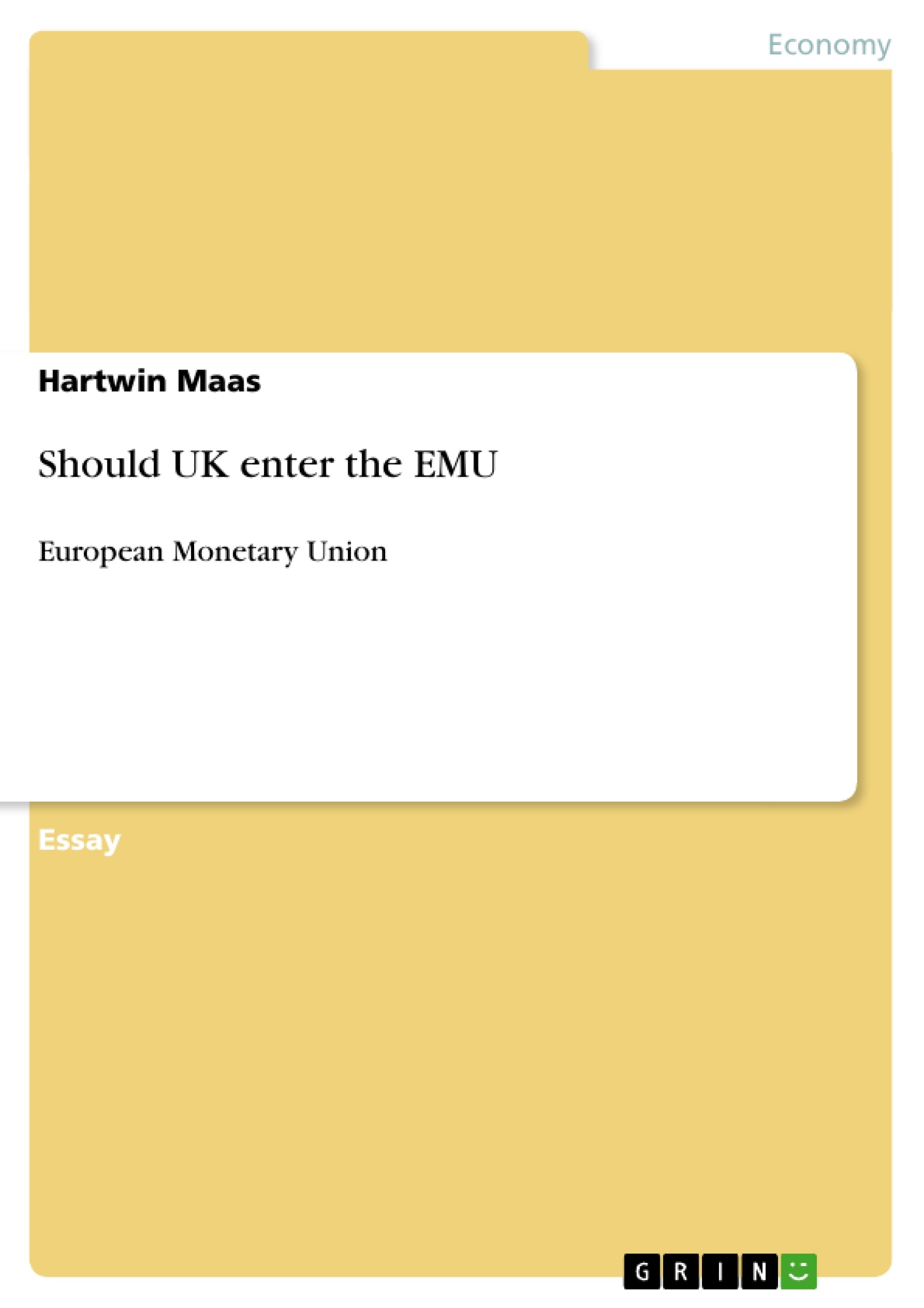Since the beginning of the idea of the European Monetary Union (EMU), UK had a negative attitude towards a single monetary policy with a single currency. This antipathy was amplified on the one hand by the withdrawal of the European Exchange Rate Mechanism in 1992 caused by different economic policies, oil price rises and German unification and on the other hand by the
launch of the EMU in 1999. In fact the UK government starts to work towards cooperation with the EMU by setting specific goals. But before taking further steps, the criteria of the Maastricht Treaty have to be fulfilled and the five economic tests assessed by the UK government have to be passed. Since 1997 the UK has made real progress towards meeting the five economic tests.
Although there are arguments that in a long term the payback of joining EMU offset the costs, the benefits are too low and the costs too high at the moment. The idea of one currency in Europe has been around for many years. But according to Pitchford the true launching of the EMU process dates from the Werner Committee which was set up in 1970 and submitted its final report, called 'the Werner Report', in February 1971. The first major step for the implementation of the Werner plan was the European 'currency snake' in
1972. Through this arrangement the fluctuations between participants' exchange rates should be limited to ± 2.25%. However, this process was not effective because of the collapse of the Bretton-Woods regime which determined a fixed exchange rate in terms of gold. The UK joined the snake system just for one month.
A further step was the creation of the European Monetary System (EMS) in 1979. The main objective of this system was to create monetary stability in Europe. This should be realized by the fixed rates between the currencies of the participating countries which where settled on their value against the European Currency Unit (ECU4). The UK did not join in the EMS and was still remote at the time of Delors Report in 1989.
- Arbeit zitieren
- Hartwin Maas (Autor:in), 2005, Should UK enter the EMU, München, GRIN Verlag, https://www.grin.com/document/113539




